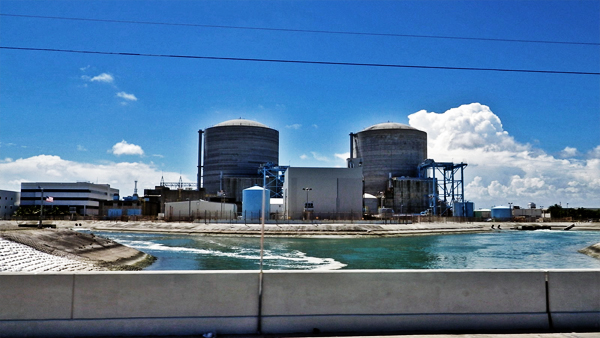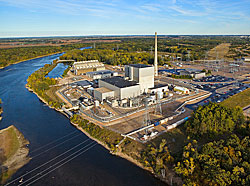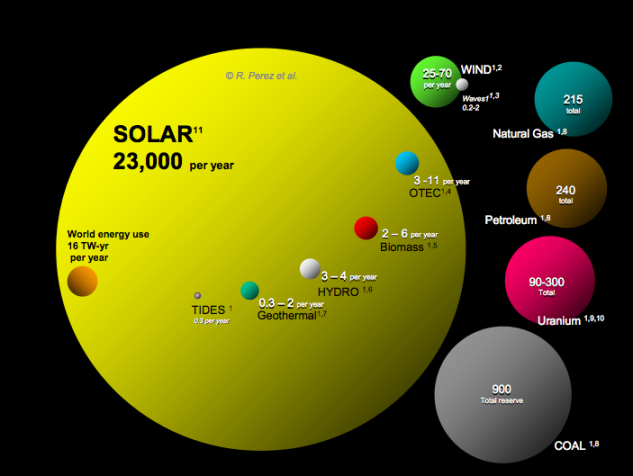Nuclear Power
Exelon is up to its old tricks–the kind that already got it kicked out of the American Wind Energy Association. The nuclear giant is once again trying to kill production tax credits for wind and solar power, but it sure doesn’t want to give up its taxpayer subsidies for nuclear power. The reason is, of course, that wind power (in the midwest especially) and natural gas, but even solar power, can and do provide electricity when needed most at lower prices than Exelon’s aging fleet of expensive nukes.
Both the wind and solar tax credits may be in trouble. Senate Finance Committee chairman Ron Wyden (D-OR) unveiled a new tax credit bill yesterday that didn’t include either. However, Wyden, who supports both, is likely to add them as amendments to the bill in a committee markup session that could occur as early as tomorrow. But there is concern that the intense lobbying by Exelon and some right-wing organizations could make the amendments overly controversial in an election year.

Safety concerns are ignored as NRC denies petition to keep FPL’s St. Lucie-2 reactor closed pending hearing. The Southern Alliance for Clean Energy (SACE) had filed the petition with the NRC in light of disclosures that the St. Lucie reactors, especially Unit-2 are showing signs of severe degradation of their steam generator tubes. Although the exact nature of the degradation is said to be somewhat different from what caused a steam generator tube rupture at San Onofre, eventually leading to the permanent shutdown of both reactors at that site, the possibility of such a rupture seems real, as does the probability of expensive repair work ahead. The NRC has not yet ruled on SACE’s request for a hearing on the issue.
Japanese families are torn as the first Fukushima evacuation refugees are being allowed to return to their homes. It’s a tiny area that Japan says has been cleaned up: 357 residents are eligible to return, but many of them say they won’t. The toll on mental health caused by stress, confusion, and lack of transparency by both the government and Tepco simply cannot be overstated. And the continued dangerous work involved in decommissioning and cleaning up the Fukushima reactors will put any returnees into harm’s way again for decades. Japan needs to acknowledge that the evacuation zone is for now and the foreseeable future a dead zone and instead focus its efforts on preventing a second Fukushima disaster rather than spending billions in largely futile attempts to clean up contaminated areas in that zone.
Don’t you love it when nuclear energy giants go clawing after each other over their failures? Duke Energy has sued Westinghouse over the cost of its cancelled Levy County nuclear project. Of course, Duke is getting most of the money it put into Levy County from ratepayers anyway, even though the reactors won’t be built, due to Florida’s outrageous “early cost recovery” law.

Another dangerous, aging reactor: the NRC is troubled by ‘degraded’ performance at Minnesota’s Monticello–yet another one of America’s Fukushima-clone GE Mark I reactors. The biggest issue for the agency is the site’s readiness to handle floods. Monticello is on the banks of the Mississippi River, which floods fairly often; a 2011 flood that partially submerged Nebraska’s Fort Calhoun reactor site kept that reactor down for more than two years. So flooding is one issue that the NRC is for the most part taking seriously. Unfortunately, the agency seems to be taking less seriously the possibility of flooding from the potential for major breaks in some of the country’s aging dam network, such as at the Oconee site in South Carolina, where whistleblowers inside the agency put the risk of meltdown at the three-unit site at 100% if a nearby dam fails.
Clean Energy

Solar energy is the motherlode. The world currently uses 16 TerraWatts of energy per year. The sun provides the earth with 23,000 possible TerraWatts per year, far dwarfing any other potential energy supply. The trick has been in harnessing all that free power, and the solar industry is finally doing so efficiently and cost-effectively. That’s why the sun will be the dominant energy source of the future. The great graphic above says it all.
Or does it? Right now at least, the real motherlode isn’t solar, or wind, or nuclear, gas, oil or coal. It’s energy efficiency, or as Amory Lovins has described efficiency: negawatts. Either way, energy not used to perform a task is like energy produced to perform that task. And increasing energy efficiency has been, and continues to be, the cheapest source of “new” electricity. While power demand continues to grow worldwide–and will continue to do so as large parts of our world are not even electrified, in the U.S. electricity demand’s peak was in 2006 and it has not yet returned to that peak; in fact demand has been falling as state-level efficiency programs and federal appliance and other efficiency standards have kicked in.
Michigan utilities are on target to meet their modest Renewable Energy Standard of 10% renewables by next year. But a new study from Union of Concerned Scientists argues the state could increase its standard to 30% by 2030 at basically no cost to taxpayers and ratepayers. However, Michigan voters in 2012 rejected a proposal to increase the standard to 25% by 2025, so it is not clear there is a sufficient political mandate there to adopt such a proposal.
Finally today, a great piece on CleanTechnica: Solar Power Advantages Versus Insanity. Want to save the planet? Go solar and the planet will thank you. More important to you to save some money? Then definitely go solar and your wallet will thank you. As the article concludes:
In the end, many of us have a fairly simple choice:
Get solar power on our home and/or business, help the planet, and benefit financially.
or
Continue sending our money to electric companies to make a handsome profit on our insanity while polluting the planet.
Sanity vs insanity. Your choice.
Inside Washington
Exactly the wrong approach: The U.S. Department of Energy is pushing Europe to increase its use of dirty energy to reduce its reliance on Russian natural gas. That’s advice that Europe, most of which is well ahead of the U.S. in adopting clean renewable energy and energy efficiency measures, really doesn’t need, nor probably want, to hear. The DOE told European nations they should increase nuclear power, natural gas fracking and carbon capture and sequestration technologies (not that those have worked in the U.S. yet, and likely never will be cost-effective). We get that the Obama Administration, and the President himself, likes to pretend that the “all of the above” energy strategy makes any sense at all. It doesn’t, it’s just a way to avoid making easy choices that would alienate one energy sector or another. But there is really no need to push such an inane policy on the rest of the world too. And that strategy is primarily driven by the DOE, first by Secretary Chu and now by Secretary Moniz. This is an agency that needs a major overhaul and needs to understand that in an era of limited financial resources, choosing all of the above is effectively the same as choosing none of the above.
Michael Mariotte
April 2, 2014
Permalink: https://www.nirs.org/2014/04/02/nuclear-newsreel-wednesday-april-2-2014/
You can now support GreenWorld with your tax-deductible contribution on our new donation page here. We gratefully appreciate every donation of any size–your support is what makes our work possible.
Comments are welcome on all GreenWorld posts! Say your piece above. Start a discussion. Don’t be shy; this blog is for you.
If you like GreenWorld, you can help us reach more people. Just use the icons below to “like” our posts and to share them on the various social networking sites you use. And if you don’t like GreenWorld, please let us know that too. Send an e-mail with your comments/complaints/compliments to nirs@nirs.org. Thank you!
Note: If you’d like to receive GreenWorld via e-mail daily, send your name and e-mail address to nirs@nirs.org and we’ll send you an invitation. Note that the invitation will come from a GreenWorld@wordpress.com address and not a nirs.org address, so watch for it.



